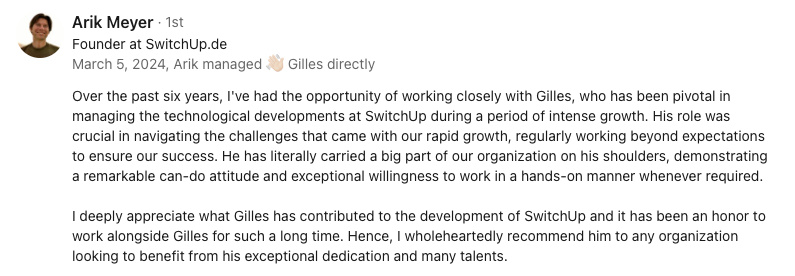Abstract:
Neuromorphic computing represents a pivotal shift in the way artificial intelligence systems are designed and operated. By mimicking the neural structures and processing methods of the human brain, this technology offers a more efficient and sustainable approach to computing. For professionals managing the frontlines of technology innovation, understanding the potential of neuromorphic computing means exploring its capacity to enhance machine learning models and AI applications. This technology promises not only improvements in computational speed and efficiency but also in reducing energy consumption, which is a critical concern for sustainable technology development. With advances in neuromorphic computing, organizations can expect to see significant enhancements in AI capabilities, including better decision-making, faster data processing, and advancements in robotics and automation. This article explores the groundbreaking opportunities neuromorphic computing offers to the tech industry, highlighting its implications for AI development and the broader landscape of computing technologies.
Advancing AI with neuromorphic computing
AI has been a game-changer across multiple sectors, but what if we could push its boundaries even further? That's where neuromorphic computing comes in. Imagine harnessing the power of technology to emulate the human brain. Neuromorphic computing uses innovative architectures modeled after neural structures, essentially mimicking our brain's processing capabilities. The promise of this technology is nothing short of revolutionary, potentially transforming how we understand and implement AI.
By grounding its models in biological paradigms, neuromorphic computing could address many of the issues we face with traditional computing systems, particularly in terms of efficiency and adaptability. In essence, it opens doors to processing and analysis methods that are both sophisticated and energy-efficient, steering us toward a future where AI can function more autonomously and intelligently.
Understanding neuromorphic computing
Neuromorphic computing is a fascinating field that aims to replicate the brain's functions within a computational framework. It leverages architectures inspired by our neural structures to process information more organically and efficiently. Instead of relying on traditional binary logic, neuromorphic systems use spikes, or pulses, similar to how neurons communicate in our brains.
One of the core components of neuromorphic computing is the *neuromorphic chip*, which is designed to mimic the way the human brain processes data. These chips are equipped with artificial neurons and synapses that work together to store and transmit information. This method offers *significant improvements* in computational efficiency, as it can handle vast amounts of data with less power consumption compared to conventional computing methods.
To put it simply, neuromorphic computing doesn't merely emulate how our brains work at a surface level; it seeks to adopt the same robust and adaptable processing techniques. Imagine a system that can learn and adapt over time, just as our brains do. The potential applications of this technology are immense—whether it's in developing more sophisticated AI or creating brain-like systems that can make autonomous decisions, neuromorphic computing is paving the way for groundbreaking advancements in various sectors.
efficiency and sustainability
One of the most compelling benefits of neuromorphic computing is its impressive efficiency and sustainability. As someone deeply invested in the potential of technology, I find this aspect particularly thrilling. Modern computing systems demand vast amounts of energy to perform complex tasks. In contrast, neuromorphic systems offer a substantial reduction in energy consumption while maintaining, and often surpassing, the high performance we’ve come to expect from traditional technologies.
How is this possible, you might ask? The secret lies in the way neuromorphic chips operate. These chips employ asynchronous event-based processing, much like our brains. Rather than continuously crunching numbers and consuming power, they activate only when they need to transmit or process information, significantly cutting down on energy usage. Imagine the energy savings achieved in a data center where neuromorphic processors replace conventional ones—a game-changer in sustainable tech development.
Additionally, the inherent adaptability of neuromorphic systems ensures they can operate efficiently under varying loads and conditions. This adaptability minimizes waste and optimizes performance, further enhancing their sustainability credentials.
With growing concerns about climate change and the energy demands of our expanding digital infrastructure, this attribute of neuromorphic computing couldn't be more timely. As I see it, adopting this technology could be a critical step in addressing the environmental impact of computing. It’s not just about creating faster and more powerful systems; it’s about doing so in a way that respects our planet's resources while ensuring technological progress.
In short, neuromorphic computing doesn't just promise better performance; it also offers a sustainable path forward in our pursuit of advanced artificial intelligence.
impact on machine learning and AI
The shift towards neuromorphic computing is poised to considerably elevate machine learning and AI models. One of the most remarkable features of this technology is its ability to process information similar to how our brains work, which can be especially beneficial for machine learning algorithms. By leveraging neuromorphic architectures, AI systems can become more efficient in terms of both speed and power consumption.
A significant improvement that stands out is the potential for real-time learning and adaptation. Traditional AI models typically require large datasets and extensive training periods. However, neuromorphic systems can learn and adapt dynamically, much like our neural networks. This capability allows for more natural interactions and decision-making processes in AI applications, making them more intuitive and responsive.
Consider the implications for fields like autonomous driving or robotics. With neuromorphic processors, these systems can process sensory information and make decisions on the fly, mirroring human reflexes and reasoning capabilities. This real-time processing can lead to safer and more efficient autonomous systems, reducing the time lag associated with traditional computational methods.
Another promising area is personalized AI, such as virtual assistants and recommendation systems. Neuromorphic computing enables these systems to tailor their responses more accurately by understanding user preferences and behavior patterns in a nuanced manner. This could result in highly customized experiences and improved user satisfaction.
Furthermore, the energy efficiency of neuromorphic technology ensures that these advancements can be achieved without the excessive power consumption associated with current AI practices. By mimicking the brain's energy-efficient operation, neuromorphic systems can deliver powerful AI capabilities sustainably.
In summary, neuromorphic computing not only enhances the efficiency and adaptability of AI systems but also paves the way for more sophisticated and effective machine learning applications. It's an exciting time for AI development, and I'm thrilled to see how these advancements will unfold in the near future.
real-world applications
Neuromorphic computing is already making its mark in several real-world applications, and it's fascinating to see it unfold. One of the most exciting areas is robotics and automation. Imagine a manufacturing line where robots equipped with neuromorphic processors can instantly learn new tasks and adapt to different scenarios without needing constant reprogramming. This makes production lines more flexible and dramatically reduces downtime.
Take, for example, the automotive industry. Autonomous vehicles are continuously becoming more reliable, thanks to neuromorphic technology. These processors enable cars to process sensory data and make split-second decisions, much like human drivers. This capability is critical for avoiding accidents and ensuring passenger safety. Companies are already running extensive tests, and the preliminary results are promising.
Another compelling application is in healthcare. Neuromorphic systems are being used to develop sophisticated medical devices that can analyze complex biological data in real time. Consider a portable diagnostic tool that could read and interpret patients' vitals with high accuracy, providing instant feedback to healthcare professionals. This could significantly improve patient care, especially in emergency situations where time is of the essence.
Beyond these niches, neuromorphic computing is also finding its way into personalized AI services. For example, virtual assistants and recommendation engines powered by this technology can offer more accurate and tailored responses, dramatically improving user experience. These systems continuously learn from interactions, becoming more intuitive over time without needing massive computational resources.
In short, the applications of neuromorphic computing are vast and varied, encompassing everything from industrial automation to personalized digital assistants. The ability to process information efficiently and adaptively opens up numerous possibilities, and it's exhilarating to witness these advancements taking shape.
challenges and limitations
While neuromorphic computing holds immense promise, it's not without its share of challenges and limitations. One of the primary hurdles we face lies in the technical realm. Developing and fine-tuning neuromorphic chips to accurately simulate neural behavior is complex and requires significant research and development efforts. The intricacies of the human brain's processing capabilities are difficult to replicate, and this gap represents a critical area for ongoing innovation and experimentation.
Another notable challenge is the compatibility with existing digital infrastructure. Integrating neuromorphic systems with current technology isn't straightforward. It's essential to ensure that these new systems can smoothly interface with traditional computing frameworks, which often involves extensive re-engineering and adaptation.
Let's not overlook the issues of scalability and commercial viability. While neuromorphic computing has shown great results in laboratory settings, scaling these solutions for widespread use presents its own set of difficulties. Ensuring consistent performance and reliability across various applications remains a significant barrier to be addressed.
Moreover, there are economic considerations. The cost of developing and manufacturing neuromorphic chips can be prohibitive. As with any emerging technology, the initial investment is substantial, making it a challenge for wider adoption in industries with tight budgets.
It's also important to mention the knowledge gap in this field. Specialized expertise is required to work with neuromorphic systems, and there are currently limited resources and training programs available. As such, building a skilled workforce capable of advancing this technology is crucial.
Despite these obstacles, the ongoing advancements in neuromorphic computing inspire optimism. Researchers and technologists are continually exploring innovative ways to overcome these challenges, bringing us closer to realizing the full potential of this revolutionary technology.
future prospects
Looking ahead, the future of neuromorphic computing appears incredibly promising, with potential developments that could significantly reshape the tech landscape and drive the evolution of AI. As we continue to refine and enhance the capabilities of neuromorphic systems, we can expect several key advancements.
First, as the technology matures, the cost of developing and producing neuromorphic chips is likely to decrease, making them more accessible to a broader range of industries. This accessibility could lead to widespread adoption and integration into various applications, from consumer electronics to large-scale industrial solutions.
Moreover, I foresee the improvement of neuromorphic systems in terms of scalability and performance. As researchers develop more sophisticated designs, these chips will become even more efficient and capable of handling complex computational tasks, further pushing the boundaries of what's possible in AI.
Additionally, neuromorphic computing could play a crucial role in advancing edge computing. By enabling AI to perform tasks locally on devices rather than relying on cloud-based infrastructure, we can achieve faster processing times, reduced latency, and increased data privacy—key considerations for sensitive applications such as healthcare and autonomous vehicles.
The evolution of AI models is also likely to benefit from neuromorphic advancements. With the ability to mimic brain-like processing, future AI systems will become more adaptable and intuitive, leading to more intelligent and autonomous solutions. This could revolutionize how we interact with technology, making devices smarter and more responsive to our needs.
In summary, the future of neuromorphic computing is brimming with potential. As we continue to innovate and overcome existing challenges, this technology will undoubtedly have a profound impact on the broader tech landscape and the future of AI.
Final thoughts
Throughout this discussion, the transformative potential of neuromorphic computing in enhancing AI capabilities and driving innovation has been thoroughly explored. This technology mimics our brain's processing architecture, offering remarkable efficiency and sustainability compared to traditional computing methods. It is particularly promising in transforming machine learning and AI applications, enabling real-time learning and adaptation, and reducing power consumption.
Moreover, the technology is already finding its way into real-world applications, from autonomous driving to healthcare diagnostics, showcasing its versatility and potential to revolutionize various sectors. However, it’s also clear that significant challenges remain, including technical hurdles, integration issues, and the need for scalability.
As we continue to innovate and surmount these obstacles, I believe neuromorphic computing will play a crucial role in shaping the future of tech and AI. The journey is just beginning, and the possibilities are as vast as our imagination allows. Let's continue to push the boundaries and explore the incredible potential that this technology holds.
You might be interested by these articles:
- Optimizing Neural Network Training with Neuromorphic Computing Systems
- Neuromorphic Computing Trends
- Neuromorphic Computing Revolutionizing IoT Efficiency





